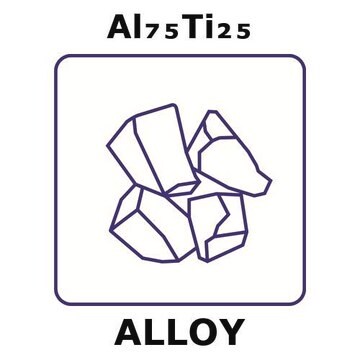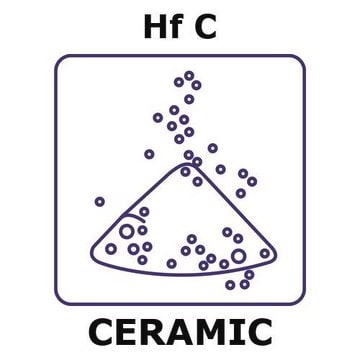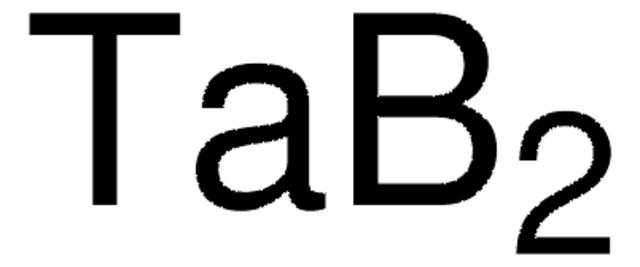GF25360354
Aluminum
rod, 50mm, diameter 30.0mm, as drawn, 99.999%
Sinônimo(s):
Aluminum, AL007930
About This Item
Produtos recomendados
Ensaio
99.999%
Formulário
rod
temperatura de autoignição
1400 °F
fabricante/nome comercial
Goodfellow 253-603-54
resistividade
2.6548 μΩ-cm
C × diâmetro
50 mm × 30.0 mm
p.e.
2460 °C (lit.)
pf
660.37 °C (lit.)
densidade
2.7 g/mL at 25 °C (lit.)
cadeia de caracteres SMILES
[Al]
InChI
1S/Al
chave InChI
XAGFODPZIPBFFR-UHFFFAOYSA-N
Categorias relacionadas
Descrição geral
Informações legais
Código de classe de armazenamento
13 - Non Combustible Solids
Classe de risco de água (WGK)
WGK 3
Ponto de fulgor (°F)
Not applicable
Ponto de fulgor (°C)
Not applicable
Escolha uma das versões mais recentes:
Certificados de análise (COA)
It looks like we've run into a problem, but you can still download Certificates of Analysis from our Documentos section.
Se precisar de ajuda, entre em contato Atendimento ao cliente
Já possui este produto?
Encontre a documentação dos produtos que você adquiriu recentemente na biblioteca de documentos.
Nossa equipe de cientistas tem experiência em todas as áreas de pesquisa, incluindo Life Sciences, ciência de materiais, síntese química, cromatografia, química analítica e muitas outras.
Entre em contato com a assistência técnica



![Poly[2-methoxy-5-(2-ethylhexyloxy)-1,4-phenylenevinylene] average Mn 70,000-100,000](/deepweb/assets/sigmaaldrich/product/structures/344/488/b8f8179d-3970-4deb-a754-adda88cdb36f/640/b8f8179d-3970-4deb-a754-adda88cdb36f.png)
